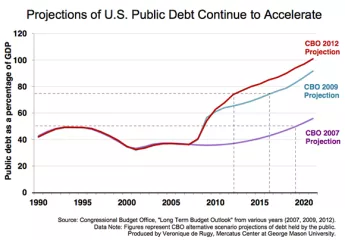- | Government Spending Government Spending
- | Data Visualizations Data Visualizations
- |
U.S. Net Position Continues to Worsen, Following 12-Year Trend
Using the data from the U.S. Department of Treasury’s Financial Report of the U.S. Government for fiscal 2011 and previous years, the chart below compares the year-over-year change in the United States’ end-of-year net position.
Using the data from the U.S. Department of Treasury’s Financial Report of the U.S. Government for fiscal 2011 and previous years, the chart below compares the year-over-year change in the United States’ end-of-year net position.
Net position is calculated by netting the government’s assets against its liabilities, as recorded in the U.S. Government Balance Sheet. Just as in the financial statement of a company, this metric provides a general picture of the fiscal health of the United States. It has been steadily declining since 2000.
Assets are primarily comprised of federal property, Troubled Asset Relief Program assets, physical structures, facilities, and equipment, while liabilities are mainly debt held by the public, accrued interest, and federal employee benefits. In fiscal 2011, the federal government held $2.7 trillion in assets and $17.4 trillion in liabilities. As a result, the net position of the government in 2011 was –$14.7 trillion, a 10 percent deterioration from 2010.
While the image depicted above is dramatic, the true situation is far worse: exposures for future Medicare and Social Security expenditures are not taken into account in the calculation of net position. According to the Financial Report, also unaccounted for are social insurance net expenditures, or unfunded liabilities from social insurance programs, that cost up to $40 trillion.



